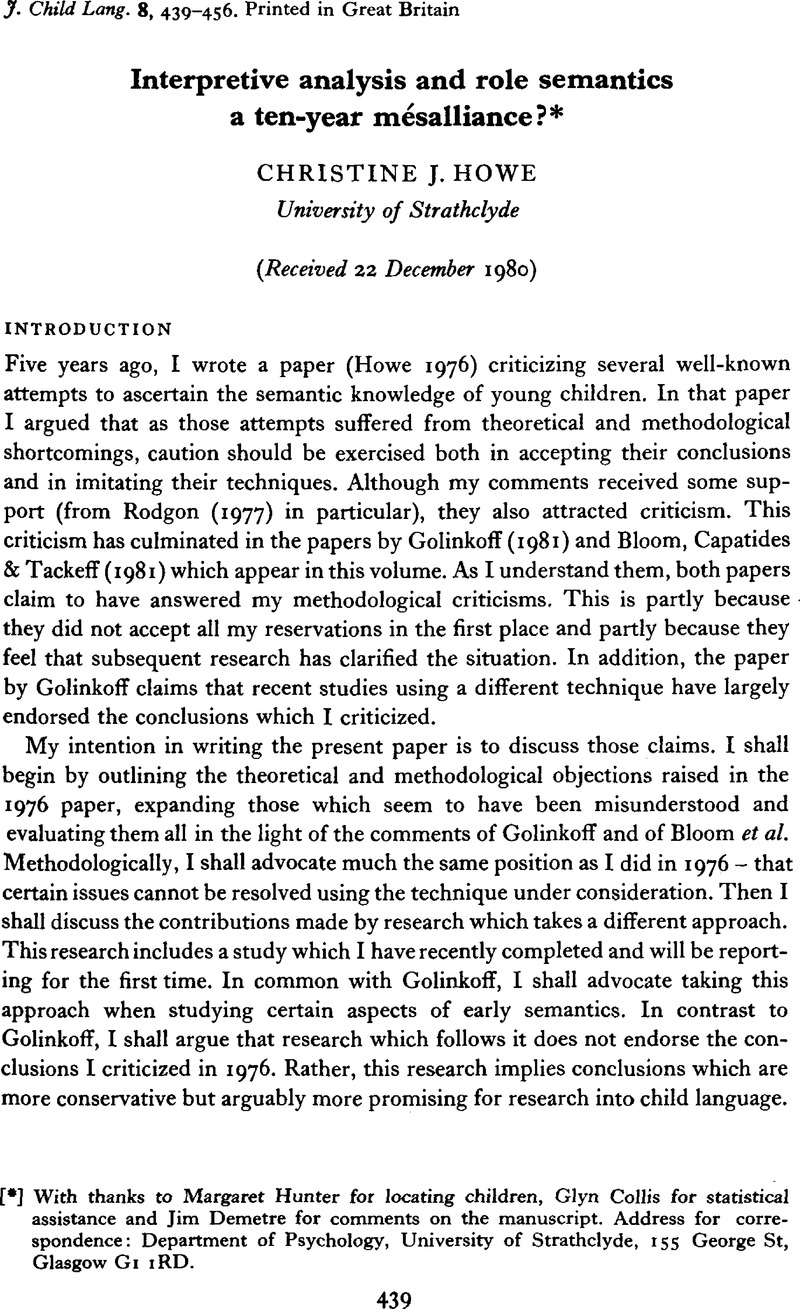Crossref Citations
This article has been cited by the following publications. This list is generated based on data provided by Crossref.
Corrigan, Roberta
1982.
Methodological issues in language acquisition research with very young children.
Developmental Review,
Vol. 2,
Issue. 2,
p.
162.
Howe, Christine J.
1983.
Book Reviews : Language Acquisition: the State of the Art. E. Wanner & L. R. Gleitman (eds). (Cambridge: Cambridge University Press, 1982). Pp. x +532. ISBN: Hardback, 0 52123817 X: Paperback, 0 521282381.
First Language,
Vol. 4,
Issue. 12,
p.
223.
Howe, Christine J.
1987.
Journal of Child Language,
Vol. 14,
Issue. 1,
p.
186.
Howe, Christine
1990.
Tina Bennett-Kastor, Analyzing children's language. Oxford: Blackwell, 1988. Pp. x + 149..
Journal of Child Language,
Vol. 17,
Issue. 1,
p.
237.
van Dijk, Marijn
and
van Geert, Paul
2011.
Heuristic techniques for the analysis of variability as a dynamic aspect of change.
Infancia y Aprendizaje,
Vol. 34,
Issue. 2,
p.
151.



